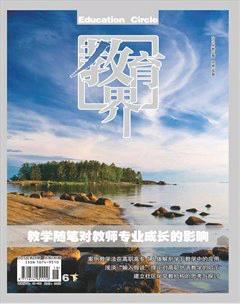How to Enlarge Productive Vocabulary
2015-08-18刘菁
刘菁
Abstract: Haycraft defined receptive vocabulary as “words that the student recognizes and understands when they occur in a text, but which he cannot produce correctly”, while productive vocabulary is “words which the student understands can pronounce correctly and use constructively in speaking and writing” (1978:44). In English language teaching practice, students productive vocabulary size lags far behind there ceptive vocabulary size. Based on the SLA theories, many reasons caused this problem and some solutions will be discussed.
Key Words:receptive vocabulary;productive vocabulary
I.Analysis based on SLA theories and teaching methodology
Krashen(1985)s input hypothesis claims that although comprehensible input is necessary for acquisition to take place, it is not sufficient, as learners also need to be affectively disposed to let in the input they comprehend. Therefore one reason is that students have not received sufficient and comprehensible input.
Production enables learners to practice what they already know, thus helping them to automatize their discourse and linguistic knowledge. Output serves as a tool ofproviding opportunities formeaningful language use. Therefore, output is necessary for students to acquire the productive vocabularies.
The productive vocabulary fossilization may be the cause of the learners lack of motivation to use the infrequency words. Since they realize their communicative purpose by the little vocabulary, they will not risk using the new words.
II.Solutions based on SLA theories
1.Making input comprehensible and sufficient
According to Long(1983a), there are three ways to make input comprehensible: (1) by means of input simplifications; (2) through the use of linguistic and extra-linguistic context; and (3) through modification of the interactional structure of conversation.
In order to develop more productive vocabularies, teachers can make the words easily to be remembered, teachers can use context to make the words meaningful or use some interesting pictures.
2.Increasing output and interaction
De la Fuente(2002), in a study of L2 Spanish vocabulary acquisition, found that negotiated interaction that included pushed output promoted productive acquisition of new words to a greater extent than negotiated interaction without pushed output. Teachers could encourage students to use the words to make sentence or write a passage, which can prompt students to remember these words more effectively and internalize the words.
3.Making Use of context to acquire the words
Context always gives a general idea of a words sense. When we meet words frequently enough in certain situations, we will get close to acquiring their specific meanings. From linguistic point of view, context was regarded as the linguistic material preceding and following a word or sentence. Using context to guess the unfamiliar words can enhance the vocabulary production ability.
4.Strengthening learners motivation
Motivation is of crucial importance in the classroom. So teacher should firstly help learners take right attitudes towards the frustration in their L2 learning. The teacher is responsible to help them solve problems in their vocabulary learning so as to enhance their confidence. Secondly, the teacher should keep the teaching contents interesting. If the teacher adopts vivid oral teaching methods, he will arouse studentsinterest.
III. Conclusion
Unbalanced development does exist between receptive vocabulary and productive vocabulary. The reasons can be analyzed from the view of input, output, interaction and motivation. Teachers should pay more attention to give students sufficient and comprehensible input in order that they can remember the words. Interactive activities should also be arranged to encourage output of the learnt words.
【References】
[1]De la Fuente,M. (2002).‘Negotiation and oral acquisition of L2vocabulary: the roles of input and output in the receptive and productive acquisition of words. Studies in Second Language Acquisition 24:81-112.
[2]Haycraft (Ed).(1978). Second language reading and vocabulary learning.Norwood, NJ: Ablex.
Krashen,S.(1985). The Input Hypothesis:Issues and Implications.London: Longman.
[3]Long, M. (1983).‘Native speaker/non-native speaker conversation and the negotiation of comprehensible input.Applied Linguistics 4:126-41.
